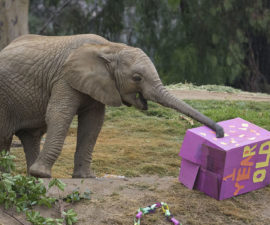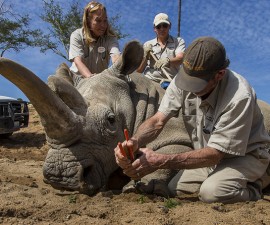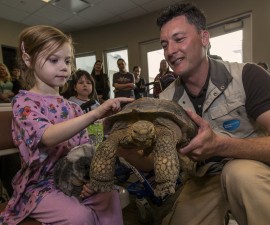BY Peggy Scott
Photography by Ken Bohn
Who can it be now? One look at two of the Safari Park’s newest residents—from their duck-like bills to their short legs, webbed feet, and otter-like tails—and it’s clear there is only one thing they can possibly be: platypuses Ornithorynchus anatinus. Since their debut in November 2019, this species is becoming more familiar to our visitors, and now it’s time to get to know the delightful duo, Birrarung (“Birra,” for short) and Eve.
Animals of a Different… Everything
For diminutive animals—platypuses top out at about 2 feet long, including bill and tail—8-year-old Birra and 15-year-old Eve are making quite a splash. “People are surprised at how small they are,” says Lori Hieber, a lead mammal keeper at the Safari Park. “But there’s a lot of personality there, and they are fun to watch.” Luis Ochoa, senior keeper, counts himself as one of the platypuses’ biggest fans. He spent three months at Taronga Zoo in Sydney, training in platypus husbandry and care. “They are fascinating animals,” Luis says. “I love to watch them hunt and eat their prey. They’re like little vacuums, except they roll like alligators. It’s amazing.”

THE WATER’S FINE
Platypuses hunt in shallow water running over rocks, and the Park’s habitat mimics that environment.
Birra and Eve’s arrival here is amazing, as well. It’s the first time in 50 years that platypuses have been seen outside of Australia, and Safari Park animal care staff wanted to make sure the relocation process went off without a hitch. Lori has gotten to know her new charges pretty well, as she also spent several weeks at Taronga Zoo prior to their trip here, learning husbandry practices particular to the species. “It’s part of the protocol to get to know each individual animal,” she says. “I was surprised at how different these two are from each other. We focused on getting to know them.”
Once the animals arrived at the Safari Park, it was time to see if all the hard work paid off. It didn’t take long to find out. “They acclimated so quickly,” Lori says. “They might have spent two hours or so in the nesting boxes, and then it was right into the pool.” Luis adds, “They hunted right away,” noting what a good sign that was. “And they started grooming. It was so rewarding.”
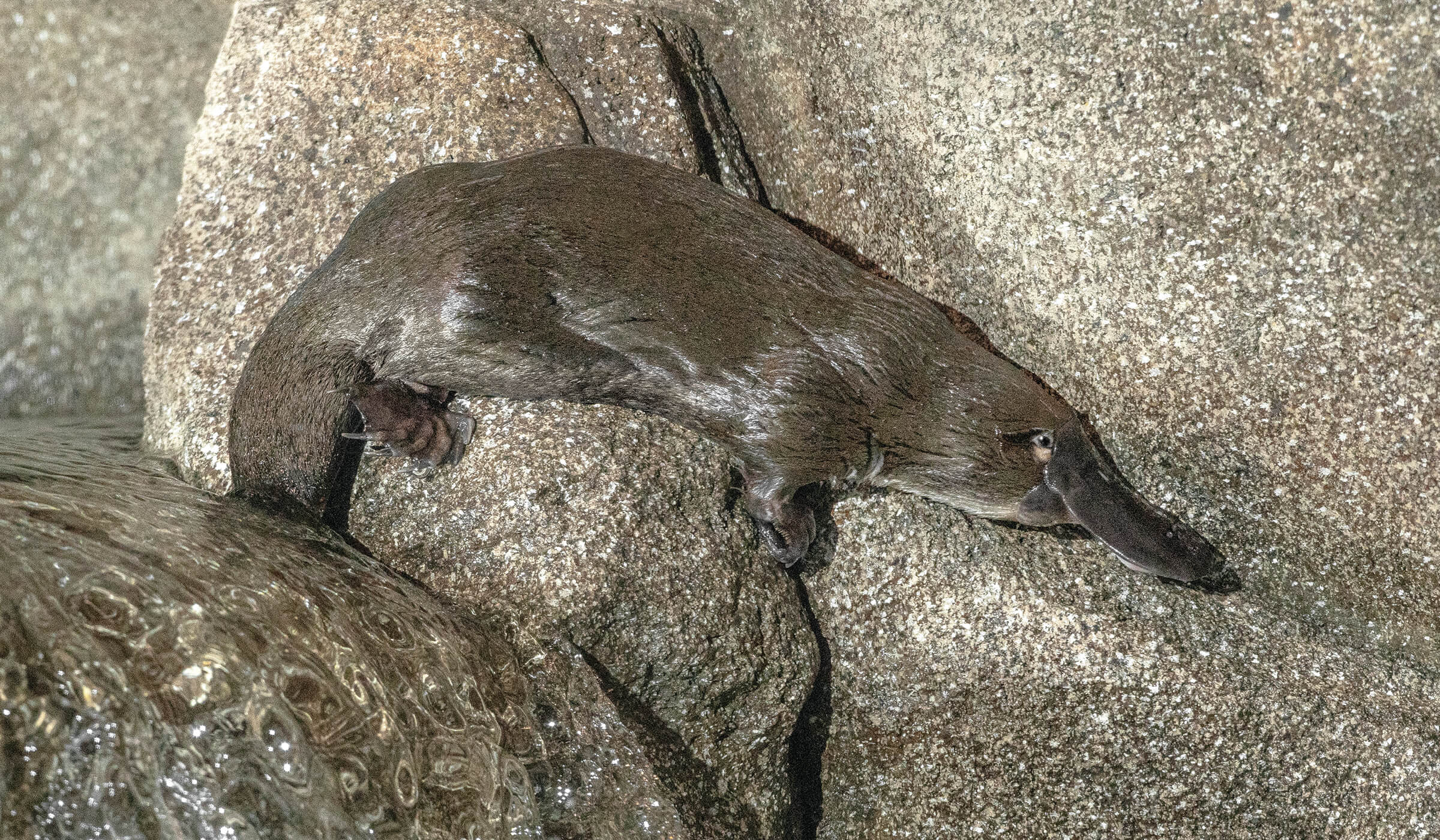
Rise and Shine, or Five More Minutes?
From their first days in Walkabout Australia’s new Nelson M. Millsberg Duck-Billed Platypus Habitat, it was easy to tell the two animals apart by their behavior alone. “Birra’s more relaxed with his keepers, but more active,” Lori says. Luis agrees, adding that while the male is a “sleep on top of the covers guy” who’s ready to go as soon as he sees his keepers at 6 a.m., “Eve likes to sleep in, all cozy,” he says. “As long as it’s on her time.” Eve is also more chatty than Birra, greeting her keepers with hissy-growl vocalizations when they check on her in her nest box.
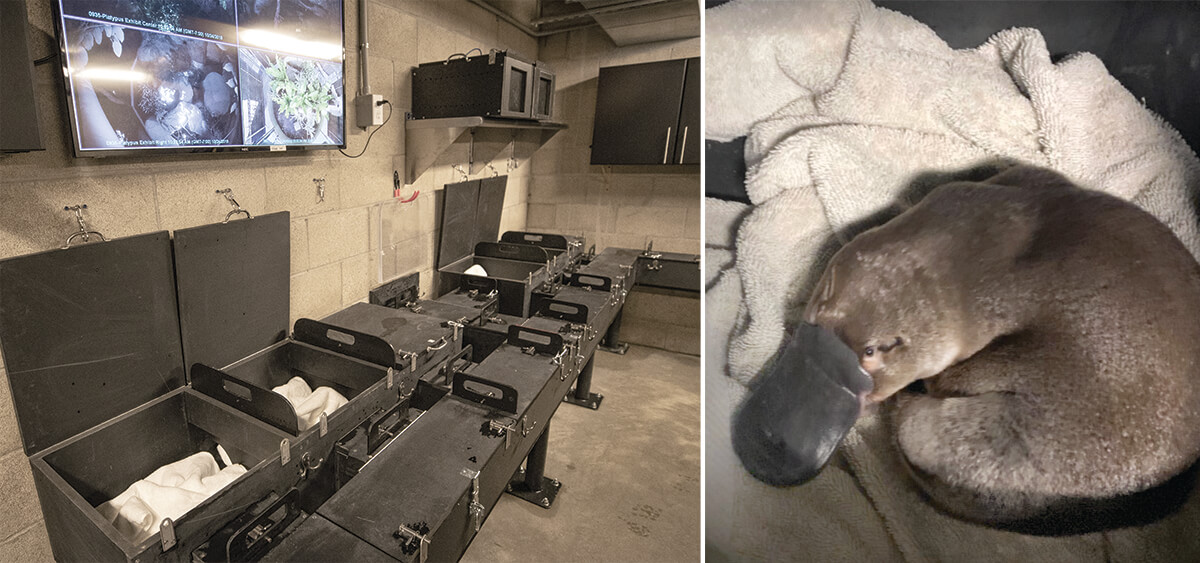
A LITTLE PRIVACY, PLEASE
The back areas of the habitat include a segmented transfer tunnel for the animals to move from place to place, and a choice of cozy nest boxes where they can curl up for a snooze. The staff keeps an eye on them via monitors or by opening the tunnel or nest box lids.
Along with snug nest boxes, the platypus habitat was designed with their comfort and specific needs in mind. They have three pools to choose from, naturalistic river banks, and extensive tunnels. Because platypuses are most active during dusk and nighttime hours, the lighting cycle in their habitat has been reversed, with evening light during the day and daylight at night.
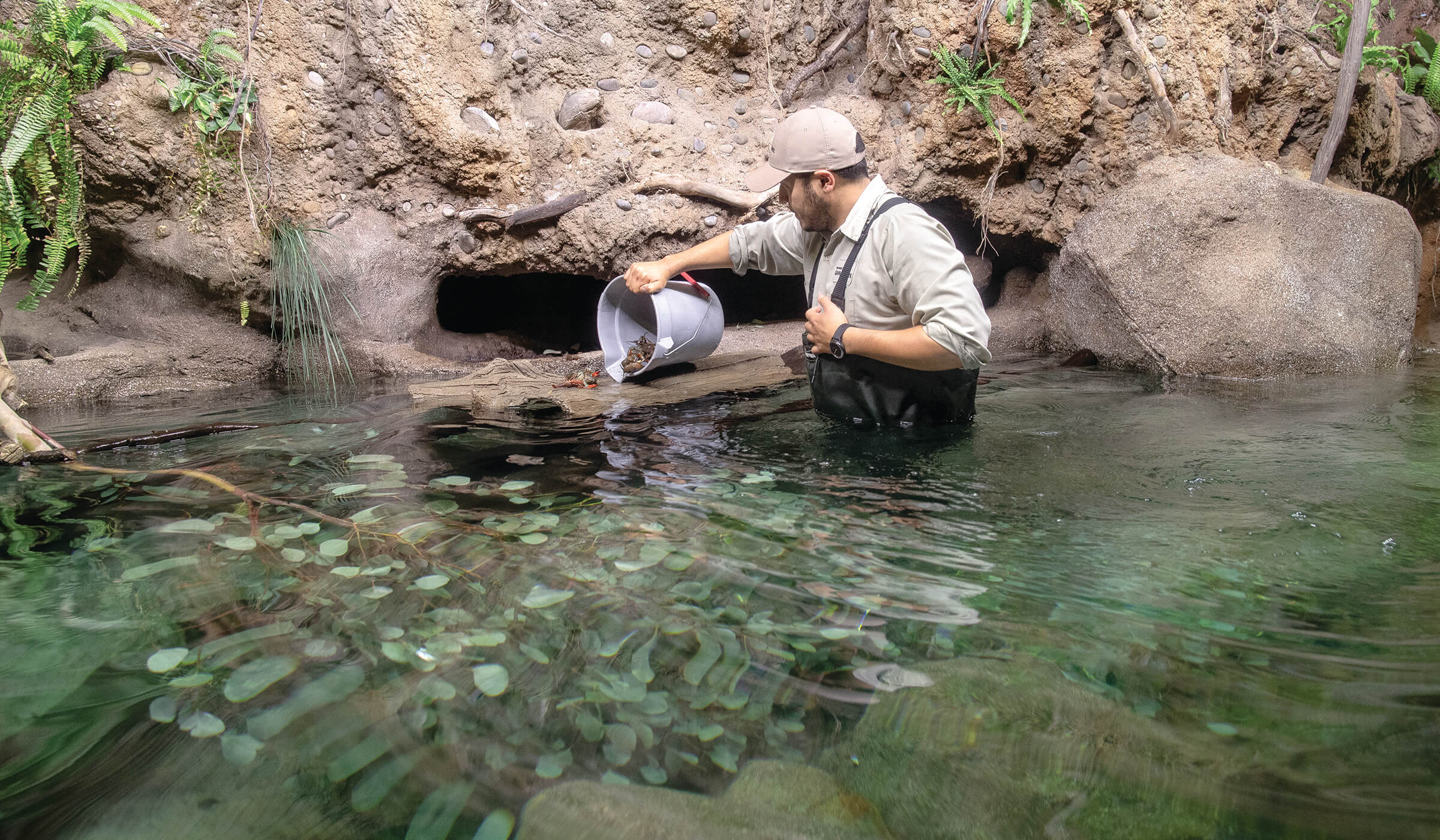
SETTING THE “TABLE”
Keepers release live food—such as crayfish—into the exhibit’s pools for the platypuses to catch and eat.
 Click here to make a difference for platypuses and other Australian animals that have been devastated by the bushfires.
Click here to make a difference for platypuses and other Australian animals that have been devastated by the bushfires.
Swim for Your Supper
Like their wild relatives, Birra and Eve depend on water for finding food, and the animal care staff do their best to mimic the platypuses’ diet in the wild. Birra and Eve dine on crayfish, mealworms, earthworms, fly pupae, and fly larvae, in what Lori calls “a mix of their favorite foods.”
Luis notes that we had to find a reliable crayfish supplier in order to make sure Birra and Eve would have food to hunt. “While they’re still sleeping, we put on chest-high waders and get to work,” Luis says. The keepers clean the platypuses’ pool, and it’s up to them to serve “dinner.” The crayfish and other live prey are released into the pool, and the hunters go to work. “Platypuses are swift and impressive hunters in the water,” Luis says. “When they dive, they close their eyes and ears, and hold their breath. They rely on sensitive electroreceptors in their bill to find their food. And when they catch something, they smash it against the rocks to kill it.”
Birra and Eve are apparently quite skilled at snapping up what’s offered. A wellness exam in early December 2019 found them to be “doing exceptionally well.” Veterinarian Dr. Meredith Clancy notes that Eve’s TVI—tail volume index—revealed that her fat storage and weight maintenance are right on target. Platypuses store fat for energy in their tails.
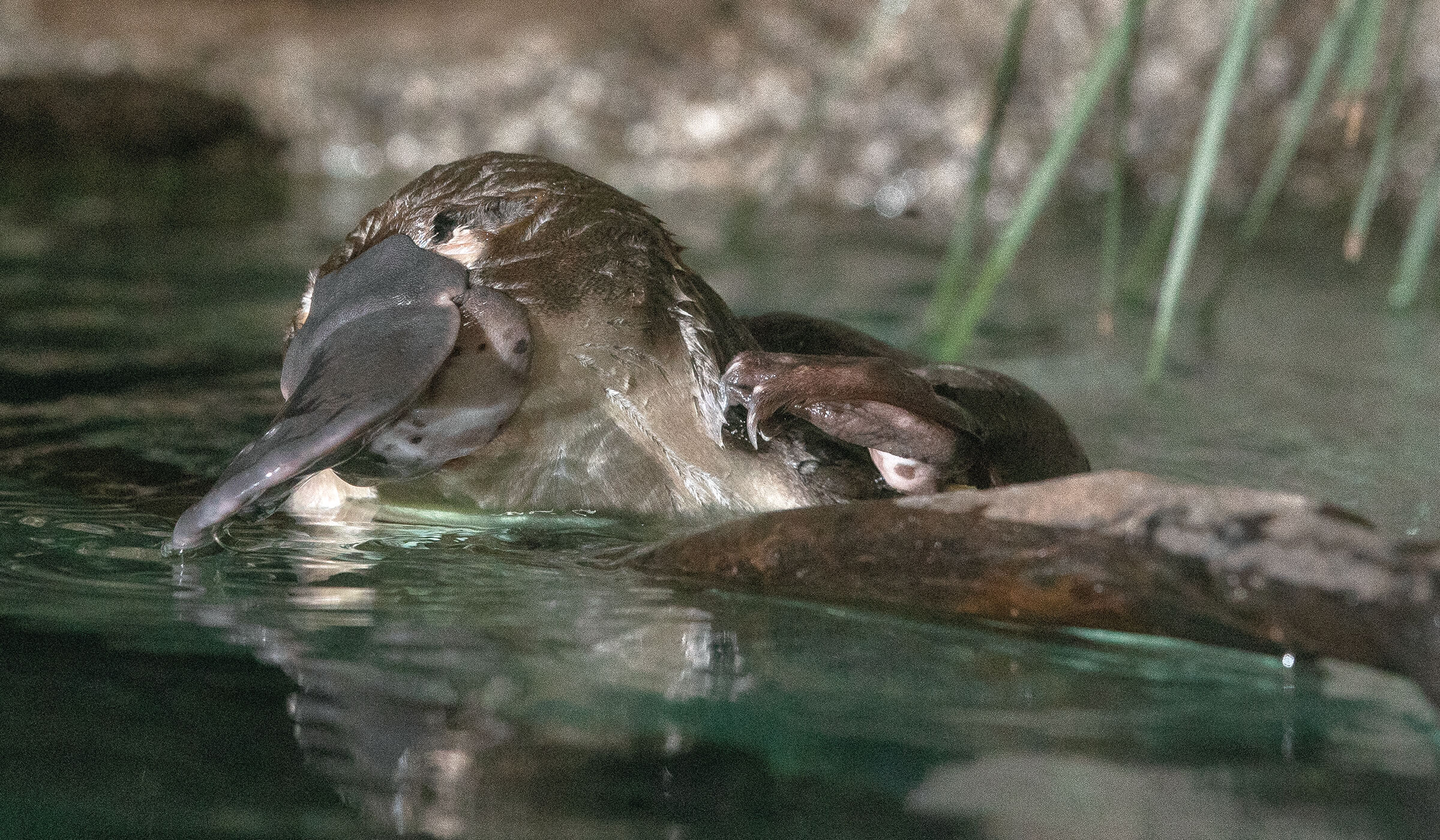
Water Logged
Birra and Eve are here to represent their species and help people learn about their lifestyle and aquatic habitat. As part of discovering more about this unique animal, San Diego Zoo Global supports a cutting-edge conservation effort in southeastern Australia that benefits six endemic species, including the platypus. A collaborative team is using a new technology called environmental DNA (eDNA) to map the distribution of and threats to five fish species and the platypus. The goal is to secure populations in at least three natural catchment areas, and gather information that will help guide protection efforts to ensure that platypuses will be swimming in their ecosystems for generations to come. Birra and Eve are ready to do their part—just don’t ask Eve to pitch in too early.


